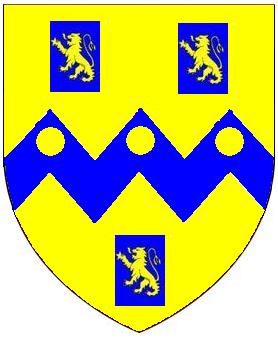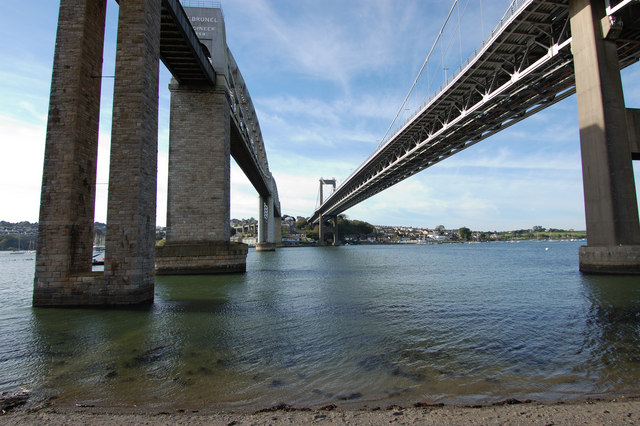|
Samuel Rolle (died 1647)
Sir Samuel Rolle (c. 1588 – 1647)Vivian, p.654: "aged 45 years and more at his father's death" of Heanton Satchville in the parish of Petrockstowe, Devon, served as Member of Parliament for Callington, Cornwall in 1640 and for Devon 1641–1647. He supported the parliamentary side in the Civil War. Origins Rolle was born c. 1588, the eldest son and heir of Robert Rolle (died 1633) of Heanton Satchville in the parish of Petrockstowe, Devon, by his wife Joan Hele, daughter of Thomas Hele of Fleet, Devon. Samuel was a great-grandson, in a junior line, of George Rolle (c. 1486 – 1552) of Stevenstone, Devon, founder of the influential and wealthy Rolle family of Devon, Keeper of the Records of the Court of Common Pleas and MP for Barnstaple in 1542 and 1545. Samuel's brothers includedVivian, p.654 Sir Henry Rolle (1589–1656), of Shapwick in Somerset, Chief Justice of the King's Bench and MP; and John Rolle (1598–1648) a Turkey Merchant and MP. Career In April 1640 ... [...More Info...] [...Related Items...] OR: [Wikipedia] [Google] [Baidu] |
Turkey Merchant
The Levant Company was an English chartered company formed in 1592. Elizabeth I of England approved its initial charter on 11 September 1592 when the Venice Company (1583) and the Turkey Company (1581) merged, because their charters had expired, as she was eager to maintain trade and political alliances with the Ottoman Empire.Kenneth R. Andrews (1964), Elizabethan Privateering 1583–1603, Cambridge University Press Its initial charter was good for seven years and was granted to Edward Osborne, Richard Staper, Thomas Smith and William Garret with the purpose of regulating English trade with the Ottoman Empire and the Levant. The company remained in continuous existence until being superseded in 1825. A member of the company was known as a ''Turkey Merchant''. History The origins of the Levant Company lay in the Italian trade with Constantinople, and the wars against the Turks in Hungary, although a parallel was routed to Morocco and the Barbary Coast on a similar trade winds ... [...More Info...] [...Related Items...] OR: [Wikipedia] [Google] [Baidu] |
Robert Rolle (died 1660)
Robert Rolle (c. 1622 – 1660) was an English politician who sat in the House of Commons at various times between 1654 and 1660. Origins Rolle was the son of Sir Samuel Rolle of Heanton Satchville, Petrockstowe, Devon, and his wife Margaret Wise daughter of Sir Thomas Wise. Career He was admitted for his legal training at the Inner Temple in 1640. He was appointed High Sheriff of Devon for 1649–50. In 1654 he was elected Member of Parliament for Devon in the First Protectorate Parliament and was re-elected MP for Devon in 1656 for the Second Protectorate Parliament and in 1659 for the Third Protectorate Parliament. In January 1660 he was appointed a member of the Rump Parliament's final Council of State but does not appear to have attended any meetings, likely due to the Council enforcing an oath abjuring the Stuart family and any Single Person or House of Lords. He was elected MP for the family's pocket borough of Callington in the Convention Parliament in 1660, but die ... [...More Info...] [...Related Items...] OR: [Wikipedia] [Google] [Baidu] |
Sydenham House, Devon
Sydenham House (anciently Sidelham, Sidraham, etc.) in the parish of Marystow in Devon, England, is a seventeenth-century manor house. The Grade I listed building is situated about thirteen miles south-west of Okehampton, on a estate. It was built by Sir Thomas Wise (d.1629) between 1600 and 1612, incorporating an older structure. It was partially destroyed by fire in 2012. The gardens are Grade II listed in the National Register of Historic Parks and Gardens. History According to the Domesday Book of 1086, immediately before the Norman Conquest of 1066 the manor of ''SIDREHA~'' was held by the Saxon magnate Brictric, a great landholder in Devon and more widely in England.Open Domesday Online: Sydenham accessed June 2018. Following the Norman Conquest, it was one of the 107 Devonshire landholdings of |
Thomas Wise (died 1629)
Sir Thomas Wise (c. 1576–1630), KB, of Sydenham in the parish of Marystow and of Mount Wise in the parish of Stoke Damerel in Devon, was Sheriff of Devon in 1612 and in 1621 served as a member of parliament for Bere Alston in Devon. Origins Wise was the second son and eventual heir of Thomas Wise (1546–1593) of Sydenham, by his wife Mary Buller, a daughter of Richard Buller (died 1556) of Shillingham in Cornwall (ancestor of the prominent Buller family of Morval and of the Buller Baronets). The Wise family is earliest recorded in the Heraldic Visitations of Devon in the person of John Wise (fl.1403) of Sydenham, living in 1403. The family can however be traced to Westcountry roots from the eleventh century.Venning & Hunneyball They provided a Knight of the Shire (Member of Parliament for Devon) in three of the Parliaments of King Henry VI (1422–1461). In about 1400 the manor of Stoke Damerel, within which was situated the estate later called Mount Wise, was inh ... [...More Info...] [...Related Items...] OR: [Wikipedia] [Google] [Baidu] |
Launceston, Cornwall
Launceston ( or , locally or , kw, Lannstevan; rarely spelled Lanson as a local abbreviation) is a town, ancient borough, and civil parish in Cornwall, England, United Kingdom. It is west of the middle stage of the River Tamar, which constitutes almost the entire border between Cornwall and Devon. The landscape of the town is generally steep particularly at a sharp south-western knoll topped by Launceston Castle. These gradients fall down to the River Kensey and smaller tributaries. The town centre itself is bypassed and is no longer physically a main thoroughfare. The A388 still runs through the town close to the centre. The town remains figuratively the "gateway to Cornwall", due to having the A30, one of the two dual carriageways into the county, pass directly next to the town. The other dual carriageway and alternative main point of entry is the A38 at Saltash over the Tamar Bridge and was completed in 1962. There are smaller points of entry to Cornwall on minor ... [...More Info...] [...Related Items...] OR: [Wikipedia] [Google] [Baidu] |
St Stephens By Saltash
Saltash (Cornish: Essa) is a town and civil parish in south Cornwall, England, United Kingdom. It had a population of 16,184 in 2011 census. Saltash faces the city of Plymouth over the River Tamar and is popularly known as "the Gateway to Cornwall". Saltash’s landmarks include the Tamar Bridge which connects Plymouth to Cornwall by road, and the Royal Albert Bridge. The area of Latchbrook is part of the town. Description Saltash is the location of Isambard Kingdom Brunel's Royal Albert Bridge, opened by Prince Albert on 2 May 1859. It takes the railway line across the River Tamar. Alongside it is the Tamar Bridge, a toll bridge carrying the A38 trunk road, which in 2001 became the first suspension bridge to be widened whilst remaining open to traffic. Saltash railway station, which has a regular train service, with some routes between London Paddington station is close to the town centre. Stagecoach South West, Plymouth Citybus, and Go Cornwall Bus operate bus s ... [...More Info...] [...Related Items...] OR: [Wikipedia] [Google] [Baidu] |
Monumental Brass
A monumental brass is a type of engraved sepulchral memorial, which in the 13th century began to partially take the place of three-dimensional monuments and effigies carved in stone or wood. Made of hard latten or sheet brass, let into the pavement, and thus forming no obstruction in the space required for the services of the church, they speedily came into general use, and continued to be a favourite style of sepulchral memorial for three centuries. In Europe Besides their great value as historical monuments, monumental brasses are interesting as authentic contemporary evidence of the varieties of armour and costume, or the peculiarities of palaeography and heraldic designs, and they are often the only authoritative records of the intricate details of family history. Although the intrinsic value of the metal has unfortunately contributed to the wholesale spoliation of these interesting monuments, they are still found in remarkable profusion in England, and they were at one time ... [...More Info...] [...Related Items...] OR: [Wikipedia] [Google] [Baidu] |
St Donat's Castle
St Donat's Castle ( cy, Castell Sain Dunwyd), St Donats, Wales, is a Middle Ages, medieval castle in the Vale of Glamorgan, about to the west of Cardiff, and about to the west of Llantwit Major. Positioned on cliffs overlooking the Bristol Channel, the site has been occupied since the Iron Age, and was by tradition the home of the Celtic chieftain Caractacus, Caradog. The present castle's origins date from the 12th century when the de Haweys and later Stradling baronets, Peter de Stradling began its development. The Stradlings held the castle for four hundred years, until the death of Sir Thomas Stradling in a duel in 1738. During the 18th century, the castle's status and condition declined and by the early 19th century it was only partly habitable. The later 19th and early 20th centuries saw several restorations. In 1852, it was purchased by John Whitlock Nicholl Carne, who claimed descent from the Stradlings but whose efforts at reconstruction were not well regarded. More en ... [...More Info...] [...Related Items...] OR: [Wikipedia] [Google] [Baidu] |
Bawdrip
Bawdrip is a village and civil parish in the Sedgemoor district of Somerset, England. The village is on the south side of the Polden Hills about north-east of Bridgwater. At the 2011 census the parish had a population of 506. The parish includes the hamlets of Bradney, Horsey and Knowle. History In 1086, Domesday Book recorded a settlement at ''Bagetrepe'' with 27 households and one mill, and another at ''Hursi'' with 19 households, both in North Petherton hundred. There may have been quarrying on the hillside in the 15th century and lias was dug in the early 19th. Lime was being extracted and processed in the extreme western tip of the parish under Puriton Hill by 1886 and until 1973 in association with the cement works at Dunball. Salt was extracted in the early 20th century. The small building on Church Road, sometimes known as "The Dwarf's House" dates from the early 19th century. It is by and high. King's Sedgemoor Drain crosses the parish from south-east to north ... [...More Info...] [...Related Items...] OR: [Wikipedia] [Google] [Baidu] |








